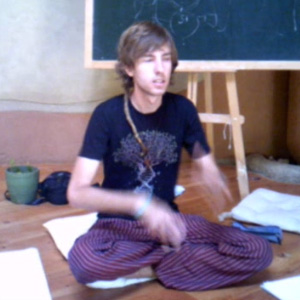A summary of a micro teach with Primož by Andrew Zionts.
Ecology is a science which explores interactions among organisms and their interactions with the environment.
Drawing an illustration on the ground of a number of elements such as sun, rain, plants, soil, bee, spider, fox, rabbit, fungi, flower, to represent the following features of an ecosystem.
Movement of Energy Illustrate with arrows flowing starting from the sun, and connecting all the flows
Cycle of Matter Illustrates the cycling of matter, which is finite, from the air to plants to soil to herbivores to carnivores to soil, etc.
Niche A specific job in an ecosystem, for example a plant captures energy
Diversity Increased diversity creates increased stability in an ecosystem, because of the amount of connections and relationships.
Succesion Changes in an ecosystem through time. Every ecosystem has a goal to mature towards stability. A lawn over time becomes a forest.
Soil creation Soil is created through succession: a concrete slab would first be colonized by lichens and mosses, which after many many years would be able to support larger plants which would in turn create soil when they decompose, and attract larger plants, leading to more soil production which would build up until it could support a stable ecosystem, like a forest.
Nitrogen Cycle Every element cycles. 70% of our atmosphere is Nitrogen, which is necessary for plant life, but it isn't available without special nitrogen-fixing bacteria in the soil with have a symbiotic relationship with the plants, whereby the plant provides sugars in exchange for nitrogen.
- Log in to post comments

